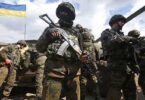Monitoring Desk
What’s new? Recent massacres of villagers in Niger’s northern Tillabery region could mark a change in a conflict previously characterised mainly by fighting between jihadists and security forces. Authorities fear the growth of anti-jihadist vigilante groups could fuel more attacks on civilians.
Why does it matter? Tensions between jihadists and vigilantes, which often pit communities against one another, could lead to clashes that imperil civilians and pose new challenges for the state, as seen in neighbouring Mali and Burkina Faso. Such clashes could fuel local grievances and provide the Islamic State with additional recruits.
What should be done? Niamey should discourage vigilante group formation, which has spurred violence, and mediate communal disputes that fuel armed group recruitment. It should also explore adding locals to the security forces’ ranks, directing them to focus on protecting villagers from banditry, and seek ceasefires with militants.
I.
Overview
Niger’s border region of North Tillabery, reeling from jihadist attacks on security forces, is now at risk of sustained communal violence. On three recent occasions, ethnic Djerma have been massacred, sparking fears of retribution spiralling out of control. An Islamic State affiliate has claimed two of the assaults. Djerma villagers talk of arming themselves against jihadists, who are locally perceived as mostly ethnic Peul and seen as primarily responsible for a surge in crime. As they weigh how to respond, Nigerien authorities should learn from neighbouring Mali and Burkina Faso, both of which have tolerated the emergence of communal militias, only to see the ensuing turmoil drive more civilians into the hands of either jihadists or self-defence groups. Niamey should continue to discourage the formation of militias, step up efforts to protect villages while defusing intercommunal tensions, and keep the door open to dialogue with local militant commanders. It should also address factors underlying the crisis, including land disputes and political rivalries due to decentralisation.
Recent events suggest that the Mali-Niger border area of Niger’s Tillabery region is headed for increasingly troubled waters. In the last two years, a local Islamic State branch, known as the Islamic State in the Greater Sahara (ISGS), has staged major attacks on security forces and bases along the Mali border to consolidate its grip on the area and its residents. Now, in the aftermath of shocking 2 January massacres in Tchomabangou and Zaroumdareye, two villages close to the border, and a 15 March attack on people returning from a trade fair in Banibangou, in the same area, the risk that civilians are drawn into the conflict is growing. Both attacks came after villagers in North Tillabery, mostly ethnic Djerma, began organising as vigilantes to resist armed groups’ predation and extortion.
Niamey fears that more such attacks could whip up communal tensions. Already, communities from the two groups – the Djerma, who are mainly sedentary farmers, and the Peul, who are mostly semi-nomadic herders – frequently oppose one another in increasing competition over access to land and resources as intercommunal relations have deteriorated amid decades of farmers’ expansion toward the Malian border. After the 2 January massacres, some Djerma accused Peul ISGS members of attacking the villages to settle ethnic scores. Authorities have been keen to play down the fault line between Djerma and Peul, stressing that the leader of one attack was himself reportedly Djerma. But the potential for an escalation in ethnic violence remains. Although the jihadist group has been making inroads among Djerma as it seeks to broaden its reach, it relies primarily on semi-nomadic communities, mostly Peul but also Tuareg and Daosahak, as recruits.
The state has limited options for dealing with these problems. Its overstretched security forces seem unable to secure vast areas of Tillabery. Troops have partly retreated from the border after taking beatings from militants in attacks on military posts at Inatès and Chinegodrar, near the Malian border, in December 2019 and January 2020. They are accused of serious abuses against civilians, which has made some communities fearful of their presence.
Still, the answer to Tillabery’s problems is not for Niamey to encourage the vigilantes who are already mobilising in reaction to jihadist violence. In Mali and Burkina Faso, the security forces’ alliances with such militias have only spurred more killing. The formation of such groups in Niger seems to have led local jihadists to lash out with attacks on civilians. Beyond considering whether new troop deployments to help secure the region are feasible or – given rising abuses against civilians – even desirable, the government’s best option will be to pursue a strategy that seeks to calm communal tensions, better protect villagers from surging banditry and once again test prospects for dialogue with militants. In particular:
The government should step up efforts to defuse ethnic tensions, including through local messaging that plays to the idea that embracing inclusion and diversity has historically been one of Niger’s distinctive strengths.
Niamey should also expand on existing efforts to ease disputes over land rights, natural resources and local politics, which sharpen communal friction and heighten the risk of violence in the region.
Police and gendarmes, who have been pulled into the anti-jihadist fight, should help convince communities that they need not arm themselves by resuming their traditional role of upholding public safety, focusing on curtailing armed banditry.
State authorities should consider reaching out to local ISGS commanders to negotiate local ceasefires, in the hope that over the medium to long term success on this front could help coax them away from the group and even draw senior leaders to the table. Although the recent massacres could complicate dialogue efforts, the election as president of Mohamed Bazoum, one of few government officials to push for dialogue when he served as interior minister, may offer new impetus to start such talks.
II.
Jihadists, Vigilantes, Mass Murder
The security and governance crisis in North Tillabery, an important base for ISGS, has taken an ominous turn. On 2 January, scores of ISGS militants on motorbikes stormed the villages of Tchomabangou and Zaroumdareye in the Tondikiwindi commune bordering Mali. According to official estimates, they killed more than a hundred people, most of them Djerma. On 15 March, masked gunmen stopped several vehicles returning from a trade fair in Banibangou, also near the Malian border, and killed an estimated 58 male Djerma passengers. Days later, on 21 March, militants killed more than a hundred people in an attack on civilians in Tilia, a rural commune in the Tahoua region just east of Tillabery. In May, ISGS, which has been making inroads into the area since 2015, claimed credit for the attacks in Tchomabangou, Zaroumdareye and Tilia. Repeated murders on this scale have raised fears that the crisis in Tillabery could be entering a new phase, with civilians at greater risk.
Repeated murders on this scale have raised fears that the crisis in Tillabery could be entering a new phase, with civilians at greater risk.
When they first began operating in Tillabery, local Islamist militants, including ISGS, which has become the leading jihadist organisation in the border area, focused on attacking security forces, largely (though not entirely) sparing civilians as they attempted to woo them to their cause. These groups recruited in particular from among Peul pastoralists, whose grievances against the state and neighbouring ethnic groups had been deepening for decades. Militants’ acts of violence against civilians were at first sporadic, but they increased as jihadists began targeting local leaders in an effort to compel their acquiescence. Throughout the border zone, ISGS has applied steady pressure upon these leaders, assassinating or abducting those who refused to comply with its dictates or whom it suspects of being state informants. For instance, in November 2019, its fighters executed the Djerma village chief of Tchomabangou because he allegedly refused to pay zakat (an Islamic tax).
By early 2020, ISGS had imposed itself as the dominant force in the border area after inflicting heavy losses on the Nigerien army with large-scale attacks on the Inatès and Chinegodrar barracks at the end of 2019 and beginning of 2020.
Over the course of 2020, however, the situation changed. Fighting with rival jihadists and French airstrikes significantly weakened ISGS. In central Mali and northern Burkina Faso, ISGS lost ground and fighters to an al-Qaeda-aligned outfit, Jama’at Nusratul Islam wal Muslimin (JNIM). During the year, an estimated 400-500 of its total fighters were killed by French strikes and in fighting with JNIM. Despite those losses, however, none of the three Sahelian states redeployed substantial forces to areas previously under ISGS control.
The Mali-Niger border thus remains the group’s stronghold but, even there, it seems worried about losing its grip. Whereas ISGS once sought to cultivate good relations with locals, its efforts to extract zakat from residents have become increasingly undisciplined, aggressive and chaotic. With armed bandits also increasingly shaking down locals, the toll on civilians is growing. It could be that a weakened ISGS is eager to gather more resources to relaunch its activities. Local commanders may also be taking advantage of the lull in oversight to take matters into their own hands.
Whatever the reason behind it, zakat, now being extracted at higher rates and several times throughout the year, has fuelled local resentment. This predation, along with the sense that ISGS may be weakening, has pushed more villagers toward organised resistance. According to local sources, by the end of 2020, rural communities increasingly sought to protect themselves by setting up vigilante groups. In late 2020, the Comité Union Tillabéri pour la Paix, la Sécurité et la Cohésion Sociale, a Djerma-dominated organisation, included a call to develop self-defence groups under the command of retired military officials in a document listing eighteen recommendations for stabilising the Tillabery region.
By the end of 2020, rural communities increasingly sought to protect themselves by setting up vigilante groups.
Villagers in Tchomabangou answered the call, gathering men from various neighbouring settlements to form a community defence group, allegedly with the assistance of a successful trader who also mobilised and armed young gold miners (known as orpailleurs) from the Téra area. On 15 December 2020, local sources say, these vigilantes killed two, or by some accounts three, ISGS representatives who had come to the village to levy taxes, steal cattle or buy supplies. Villagers then refused to cooperate with an ISGS delegation investigating the deaths. The militants responded first by kidnapping the village’s new chief and declaring Tchomabangou an enemy settlement. The assailants on motorbikes arrived a few days later, perpetrating the mass murder of 2 January. While their initial target was the loosely armed militia in training, the attackers also shot villagers dead. An Islamic State communication claimed the attack aimed to put an end to villagers’ organisation into state-sponsored self-defence groups.
In the case of the Banibangou massacre, locals’ accounts diverge as to what triggered the killing, but most who spoke to Crisis Group mentioned a fledgling resistance movement in villages around Chinegodrar and Darey-Daye. After village chiefs and religious leaders encouraged young Djerma villagers to arm themselves with bows or guns, militants set out to punish the village of Darey-Daye, killing seven people in the process. Forced to retreat in the face of armed resistance, the militants subsequently ambushed several vehicles transporting passengers back from a trade fair to Chinegodrar and Darey-Daye, singling out Djerma men for execution.
The escalating violence in North Tillabery contrasts with trends in neighbouring Mali’s Macina area, where the jihadist Katiba Macina insurgency has managed to impose its rule and curb levels of violence against civilians. In North Tillabery, however, ISGS does not presently have the capacity and may not even have the ambition to govern the region and its population. Instead, the group may have decided that excessive violence is the best tool to suppress burgeoning opposition and thus retain its position as the dominant armed group in the area.
III.
Violence Takes an Ethnic Turn
Like the conflicts in Mali and Burkina Faso, the crisis in North Tillabery is increasingly fraught with ethnic undertones. While the massacres in the communes of Tondikiwindi and Banibangou appear to be the result of a jihadist bid to quell resistance among villagers and assert control, the presence of the militants is aggravating intercommunal tensions. These tensions, in turn, risk fuelling a worrying cycle of retaliatory attacks and ethnic strife.
The risk of escalation is fuelled by at least two longstanding sources of friction among the region’s ethnic groups. First, population growth among farming communities has intensified their competition with nomadic pastoralists over resources in an area where land rights are already precarious for many because they were often established in parallel with the recent creation of villages, and therefore unevenly enforced and often contested. Secondly, decentralisation efforts such as the 2004 creation of rural communes, which the government rolled out to provide villagers with more rights and resources, have aggravated existing political rivalries, as chiefs now have to contend with elected officials and new demands from stigmatised classes. Relations among communities then deteriorated in the wake of Mali’s 2012 rebellion, which prompted various groups in Tillabery to take up arms. Most hailed from semi-nomadic communities, and many mobilised along ethnic lines.
The infiltration of jihadists made things worse. Before their entry into the region, communities and authorities were able to calm periodic flare-ups, albeit without offering long-term solutions to local disputes. Since 2015, the presence of militants, as well as counter-terrorism operations locally perceived as targeting particular ethnic groups, have sharpened existing tensions and powered far more lethal forms of violence.
Social media messaging risks further widening divides. After the Tchomabangou attack, anonymous messages on social media networks blamed Peul for the killing, and called upon Djermas to take revenge. While many interpreted the massacre as an ISGS attempt to discourage armed resistance from villagers who baulk at tax collection, others blamed Peul members specifically, viewing Peul land disputes with Djermas as a driver of violence. In the Banibangou incident, ISGS most probably sought to punish villages that had started to mobilise resistance and to spare those who did not join self-defence groups. Still, what most Nigeriens noticed and shared on social media was the fact that the militants killed the Djerma passengers, but not the others.
Officials now fear that Niger could follow in the footsteps of neighbouring Burkina Faso and Mali, where the rise of jihadist and vigilante groups, often both recruiting on an ethnic basis, has led to a vicious spiral of intercommunal killings.
Officials now fear that Niger could follow in the footsteps of neighbouring Burkina Faso and Mali, where the rise of jihadist and vigilante groups, often both recruiting on an ethnic basis, has led to a vicious spiral of intercommunal killings. The violence is self-perpetuating, as each incident pushes more locals to join an armed group for protection. In central Mali, the epicentre of that country’s conflict, fighting between Peul herders and Dogon farmers has killed thousands since 2016. It has been fuelled partly by the enlistment of numerous Peul in JNIM and Dogon in the Dana Ambassagou vigilante group. In northern Burkina Faso, the emergence of Koglweogo, vigilante groups created in the 2010s mostly by ethnic Mossi as well as Gourmantche, Bisa and Foulse, has resulted in more intercommunal killings amid a concurrent rise in jihadist activity.
In Niger, state officials are reluctant to talk publicly about ethnic tensions, an extremely contentious issue. The Haute Autorité à la Consolidation de la Paix (HACP), a council mandated by the Nigerien government to tackle the roots of instability in Tillabery, has done well to play down the role of communal animosities in fuelling the recent killings. On 9 January, the HACP’s president, General Mahamadou Abou Tarka, gave a speech near Tondikiwindi, stressing that ISGS leaders in Tillabery, while initially all Peul, now include several Djerma commanders, such as Hamidou Hama, who authorities say led the assailants in Tchomabangou and Zaroumdareye. The fighting was not primarily intercommunal, he implied.
Nevertheless, many perceive ISGS as dominated by Peul, and most known commanders are Peul. The organisation’s recruitment among the Djerma – by far the largest ethnic group in the Tillabery region – is still fairly limited.
The widely accepted assertion that a Djerma led the killings in Tchomabangou and Zaroumdareye, however, does suggest that ISGS has become adept at recruiting across communal lines in Tillabery and at exploiting intra-ethnic splits. For example, Hamidou, also known as “Maitouwo”, joined ISGS amid violent tensions between two rival Djerma communities. From November 2018 to January 2019, as a decades-long dispute over agricultural rights heated up, members of Hamidou’s community, known as Tingara 1, clashed with their neighbours in Tingara 2, resulting in several deaths and displacement of civilians. Hamidou had by that point reportedly developed business links with ISGS, but made the jump to active militancy after Tingara 2 villagers allegedly denounced his ties to the jihadists and security forces attempted to arrest him. From 2019 to 2021, he rose as a commander in the jihadist movement, entrusted with overseeing its recruitment and taxation efforts in Djerma areas.
The absorption of Djerma into ISGS ranks signals a strategy for expanding influence by drawing in recruits from across communal lines. For example, the group has exploited conflicts among Peul, Tuareg and Daosahak nomads to bring disaffected members of all three groups into the fold. But while recruitment of nomads has helped the organisation in controlling the sparsely populated Mali-Niger border zone, the inclusion of more Djerma could give the group greater reach into more densely populated areas of central Niger. Although communal tensions sometimes reverberate among the jihadists themselves, for the time being ISGS has managed to keep them in check through internal diplomacy.
IV.
The Authorities’ Track Record
Rising violence in and around Tondikiwindi and Banibangou since late 2020 is a stark illustration of the twin crises faced by the Nigerien authorities, who seek to counter ISGS and protect civilians while also managing the deterioration of communal relations in North Tillabery.
At present, state security forces are simply not able to protect every part of this remote area. They have retreated from several key border outposts following the devastating attacks on the Inatès and Chinegodrar barracks in December 2019 and January 2020, and authorities remain reluctant to redeploy fully along the border. A local official described the entire northern stretch of Tondikiwindi, which is home to pastoralists and farmers, as “unreachable” due to the danger posed by ISGS militancy. Security personnel who do patrol this area restrict their visits to far-flung villages to a few days or even hours. The 2 January massacre came just one day after a Nigerien army unit patrolling the surrounding area withdrew, suggesting that jihadists monitor military movements and time their attacks accordingly.
To address the security vacuum in North Tillabery, the national guard last year recruited 500 young men from various local communities for deployment to their own regions as part of mixed units. The state is also trying to better separate the duties of the military and police, which would free up the internal security forces to tackle banditry rather than fight the insurgency. President Mohamed Bazoum seems sensitive to the need for this change; in his 2 April inauguration speech, he stressed the need to better enforce the distinction between the two forces. But these measures will take time to bear fruit. Attempts to improve recruitment and training of internal security forces may yield mixed results as long as they remain under military command in North Tillabery, which limits their operational capacity.
Moreover, even when the Sahelian states have been able to mount military action, it has sometimes come with disastrous consequences for civilians. Sometimes problems have arisen because security forces outsourced their work to ethnic-based armed groups. In 2017 and 2018, Nigerien authorities authorised Malian ethnic militias, mainly Tuareg and Daosahak, to take on ISGS on the Nigerien side of the border. These militias in turn unleashed indiscriminate violence against Peul, driving many Peul to seek alliances with ISGS.
Fear and low morale among the country’s overstretched, under-resourced security forces, who have suffered their own great losses in this zone, may make them increasingly prone to using heavy-handed tactics.
Nigerien state forces are suspected of abuses as well. Anti-jihadist operations following the December 2019 and January 2020 attacks resulted in the killing or disappearance of 102 civilians, allegedly at the security forces’ hands. Fear and low morale among the country’s overstretched, under-resourced security forces, who have suffered their own great losses in this zone, may make them increasingly prone to using heavy-handed tactics. In the early hours of 30 April, Nigerien soldiers killed more than twenty ethnic Daosahak detainees they had arrested near Chinegodrar. The defence ministry claimed they were planning a new attack on Banibangou and died trying to escape detention. A Daosahak community group, however, said they were ordinary citizens and called for an investigation, listing the victims’ names.
The state’s political efforts to calm tensions have also faced problems. Previous government-led forums aiming to address grievances and build trust between locals and security forces have not stemmed the violence in the Tondikiwindi commune or elsewhere in Tillabery. A late 2019 forum intended to reconcile the two Tingara villages was disrupted by the fresh fighting between jihadists and security forces that followed the Inatès and Chinegodrar attacks. An emphasis on defeating jihadists militarily has often meant that local mediation and dialogue initiatives lag behind in terms of the authorities’ attention. Many such initiatives, including those attempting to find or implement consensual solutions for the management and allocation of natural resources, have suffered from a lack of consistent investment by the state.
Authorities are aware that the Tillabery crisis requires political engagement, but their attempts so far have fallen short. On 4 January, two days after the Tondikiwindi massacre, senior officials in Niger’s national security council met, vowing to better protect the border zone and support residents who lost food supplies in fires set by jihadists. On 9 January, the HACP hosted a forum involving a wide range of community leaders and elected officials in Ouallam, the capital of the Ouallam department that includes Tondikiwindi, to address the risk of intercommunal conflict. The forum seemed more focused on preventing immediate violence than on resolving underlying disputes, however. While these efforts are a step in the right direction, more concrete follow-up is needed.
V.
Options for Calming the Crisis
Given the challenges of defeating the local Islamic State branch militarily, at least as long as the jihadists can dart across the border into Mali, authorities will have to look to a diversified set of strategies for containing its spread, protecting civilians and stabilising Tillabery. Different sources of violence become dangerously entangled – from banditry and land disputes to jihadist activities. Most worryingly, recent events are showing that violence is taking an ethnic turn, with civilians increasingly at risk of slaughter on the basis of belonging to a particular ethnic group or village.
Niamey should discourage the creation of new self-defence groups that are forming in response to jihadist, bandit and communal violence.
To address the growing risk of ethnic violence and prevent it from developing further, one thing Niamey should do is discourage the creation of new self-defence groups that are forming in response to jihadist, bandit and communal violence. Such groups would likely make the already fraught situation in Tillabery even worse. A number of local politicians, village chiefs and businessmen are pushing for the creation of these groups with or without state support. But for Nigerien authorities to sanction this approach would be to ignore the hard-won lessons of neighbouring states. Collaboration between the state and Dana Ambassagou and Koglweogo vigilantes in central Mali and northern Burkina Faso, respectively, has accelerated ethnic violence against civilians in these areas. Moreover, the recent massacres in North Tillabery suggest that the creation of self-defence groups can wind up putting Djerma civilians in even greater peril. In Tchomabangou and Darey-Daye, villages were punished precisely for launching self-defence groups.
Thus far, except for its above-referenced alliance with Mali-based groups in 2017 and 2018, Niamey has wisely resisted the temptation to rely on ethnic militias to play a role in securing North Tillabery, aware that they can feed wider communal violence. It should continue to discourage the formation of these groups by dissuading communities from mobilising to arm themselves. It should also, in an effort to prevent ethnic tensions from spiralling out of control, build on recent HACP messaging to formulate a persuasive state narrative condemning communal violence. Ethnic diversity and inclusivity have traditionally been central to Niger’s national identity, and many Nigeriens view them as something that sets the country apart from its neighbours. Now, however, social media posts propagating an ethnic interpretation of recent killings are fuelling hostility among communities. To counteract this effect, state authorities should look for ways to stress the need for reconciliation between communities and offer a more nuanced narrative of the spiralling violence in North Tillabery.
At the same time, if the government wishes to persuade villagers not to arm themselves in self-defence, they will need to pursue a mix of short- and long-term efforts to demonstrate that the state can protect them. Military authorities could, for example, consider reassigning troops to border posts, including Inatès and Ikarfane, and conducting counter-terror operations along the Malian border. Should they choose this option, they should exercise careful oversight given the now-known risks of soldiers committing abuses against civilians in this area. The National Human Rights Commission (CNDH) has played a key role in investigating and publicising military abuses against civilians in the last year. It should continue to shine a light on abuses and push for accountability.
Meanwhile, Niamey should direct the police, gendarmes and national guard to become far more active in countering rising banditry, especially when it comes to arresting criminals and returning stolen cattle or goods. Doing so would not only go some way toward rebuilding trust between security forces and rural communities, but also demonstrate the state’s readiness to protect rural dwellers, provide other basic services they value and help stem escalating communal frictions.
Civil and military authorities should continue working together to make the security forces more locally representative, which could help reduce friction with locals over the long term.
In the longer term, Nigerien authorities should take advantage of ISGS’s apparent weakening to carry out security reforms. One such reform might involve disentangling the military and internal security forces, which have different missions but are under a single military command patrolling the border. Civil and military authorities should also continue working together to make the security forces more locally representative, which could help reduce friction with locals over the long term. State security forces will continue to be the primary protection that these communities have, however imperfect. A force that relies more heavily on local recruits might find it easier to win residents’ trust, would likely have valuable knowledge of the terrain and could for these reasons be better positioned than it is now to deliver on promises of civilian protection. While, as Crisis Group has previously noted, this approach would involve risks that would have to be managed, it remains a better option than relying solely on security forces from elsewhere.
Pursuing local ceasefires through dialogue is a further measure that Niamey could consider to shield civilians from the violence. President Bazoum could – publicly or privately – designate a special office, attached to the presidency, to reach out to local jihadist commanders and start conversations appealing to their community-based and socio-economic interests. Authorities would most likely need to offer a range of incentives similar to what was offered to Niger’s Tuareg rebels in the 1990s, such as commitments to integrate fighters into security forces, bring rebel leaders into regional positions of influence, protect vulnerable minorities and invest in regional development. The ceasefire should include an end to zakat extraction at gunpoint for those living in the affected areas.
Such discussions will create risks for those involved and it will be important for state authorities to allay militants’ potential fears that the state and its foreign partners are using mediators to track and kill them. To improve coordination between military and political efforts, and prevent a scenario where the two act against one another’s interests, President Bazoum should give this office the authority to rein in military operations in parts of the border zone should they need a lull to move forward with negotiations, and should a non-aggression pact become reality.
While it is almost certainly premature to try to bring the ISGS commander, Adnan Abu Walid al-Sahraoui, to the table, that would be the ultimate goal of a dialogue-focused strategy. If Niamey can begin to peel border zone commanders away from ISGS, and reverse some of the group’s momentum, then perhaps Sahraoui’s calculations will change. He did, after all, begin negotiations with senior officials in 2017 before they were derailed. If Sahraoui is willing to resume talking, authorities could consider offering the non-aggression pact they discussed with him in 2017.
The timing may seem terrible for dialogue with ISGS militants, coming so close on the heels of horrific massacres. Niger’s most important foreign partner, France, remains steadfastly opposed to such dialogue. At a 15 February summit in the Chadian capital N’Djamena, President Emmanuel Macron, a strong proponent of French military intervention in the Sahel, reiterated this opposition. The notion of talking to militants likewise remains controversial in other Sahelian states.
Bazoum has the authority to pursue dialogue with jihadists as part of efforts to stop intercommunal violence in Tillabery.
Nevertheless, in Burkina Faso, where Prime Minister Christophe Dabiré publicly ruled out dialogue, covert meetings between senior officials and jihadists beginning October 2020 produced a makeshift ceasefire that considerably slowed violence in the months that followed. In Mali, public support is coalescing around efforts to strike a deal with jihadists after years of destructive fighting between insurgents and self-defence groups. Niger, the first Sahelian state to explore the dialogue option when Bazoum was interior minister in 2016-2017, should not lag behind. Now that he is president, Bazoum has the authority to pursue dialogue with jihadists as part of efforts to stop intercommunal violence in Tillabery from escalating further.
Finally, authorities should also place a higher priority on measures to resolve disputes within and between communities, over resources in particular, to address drivers of violence and show that the state has a useful role to play in governance. The HACP, for example, could, with support from foreign partners or NGOs, put a more systematic effort into peacebuilding endeavours to address and ease tensions, whether over land use grievances or among local authorities, villages or communities, starting with villages where tensions are high and where jihadists have already started to actively recruit fighters.
VI.
Conclusion
Niger is at serious risk of seeing more mass killings like those that have traumatised neighbouring Mali and Burkina Faso. As jihadists continue to recruit from and prey upon local communities, forming self-defence groups may seem like a solution for the civilians who live there, but forming such militias risks triggering new cycles of violence that may ultimately strengthen ISGS. While Niger’s authorities, struggling to overcome the jihadists militarily, have thus far set a positive example in the central Sahel by avoiding the use of proxy homegrown militias for counter-terror operations at the border with Mali, they are under pressure to protect their people. Niamey does not have any easily actionable solution at hand. Yet, through a mix of calibrated security measures, messaging to calm ethnic tensions, efforts at dialogue with militant groups and initiatives to manage community-level disputes, Niger’s authorities will be best able to move toward their security goals and stop a trend of terrible violence against civilians from getting yet worse.
Appendix A: Map of the Deadliest Attacks on Civilians, March 2020-March 2021

Appendix B: Security Forces and Civilians Killed in Tillabery Between January 2020 and March 2021

As the number of security forces killed declined during this period, the number of civilians killed rose dramatically. Source: ACLED (Armed Conflict & Event Data Project), as of 3 April 2021. Reported fatalities are as defined by the ACLED codebook.
courtesy: (crisisgroup.org)






